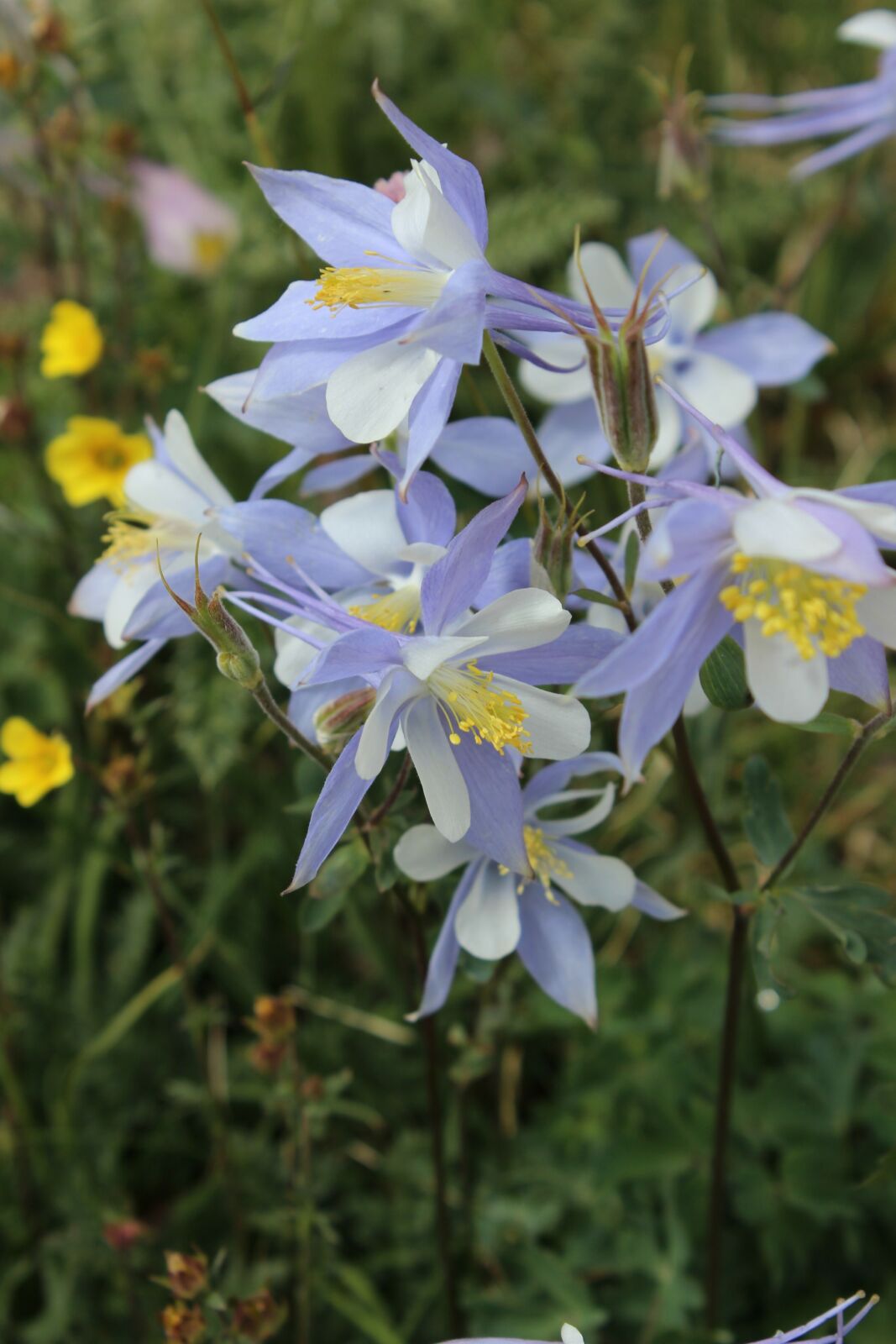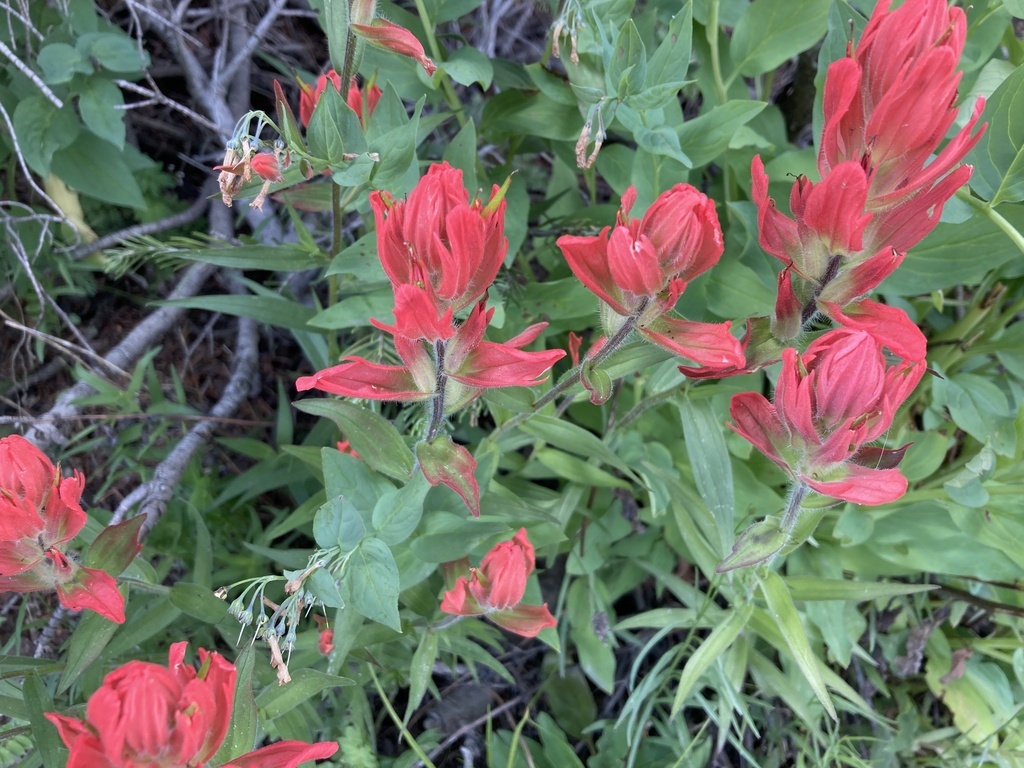The first week of May is National Wildflower Week!
To celebrate, we are highlighting three native wildflowers from different regions of the country in a four-part scavenger hunt series. If you live in the Rocky Mountains, we challenge you to visit your local National Forest this spring and find these three native wildflowers.
An important reminder before you get started. We often want to save the beauty of flowers by picking them, but it is important that we leave flowers for wildlife that depend on their seeds, nectar, and pollen for food. Save wildflowers’ beauty by taking a photo, not taking the plant.

Photo by Jack Pritchard.
Colorado Blue Columbine
Aquilegia coerulea
- What I look like: Colorado Blue Columbine is a beautiful, native wildflower that has clover-like compound leaves and blue and white flowers that hang down from its steams. Colorado Blue Columbine’s genus name Aquilegia comes from the Latin word for eagle because the shape of the petals is said to look like an eagle’s claw.
- When I bloom: June to August.
- Where you can find me: Colorado Blue Columbine can be found across the Rocky Mountain region in both foothill and alpine environments. Colorado Blue Columbine thrives in partial shade and a range of soil conditions from moist to gravelly, so look for them along woodland edges, riverbanks, meadows, and gravelly shores and ridges.
- A fun fact about me: Colorado Blue Columbine is Colorado’s state flower.

Photo by Jack Pritchard.
Pasqueflower
Pulsatilla patens
- What I look like: The Pasqueflower’s distinctive blue bloom has six to eight petals that curve into a bell shape around its yellow center. Each stalk has a single flower and a circle of thin, hairy leaves that encompass the flower from below. Pasqueflower’s flowers can appear blue, purple, or white.
- When I bloom: April to June.
- Where you can find me: Pasqueflower is a western grasslands species that can be found throughout the Rocky Mountains in prairies, open slopes and woods, and granite outcrops. Pasqueflower prefers locations that are sunny and dry so look for them in areas with minimal tree cover and soil moisture.
- A fun fact about me: Pasqueflower gets its name from the time of year it blooms. Throughout much of its range, Pasqueflower is one of the first wildflowers to bloom and often aligns with Easter.

Photo by Jack Pritchard.
Giant Red Indian Paintbrush
Castilleja miniata
- What I look like: Giant Red Indian Paintbrush can grow up to three feet tall and has a small number of stems with narrow, alternating leaves and flower clusters that resemble a ragged red paintbrush. The red “petals” at the top are actually modified leaves that conceal the small green flowers at the top of each stem.
- When I bloom: March to October.
- Where you can find me: Giant Red Indian Paintbrush is native to the wet mountain meadows and streambanks of the Western United States below 11,000 ft. Giant Red Indian Paintbrush requires lots of sun and moist soil and can most commonly be found in open meadows and mountain slopes with a nearby water source.
- A fun fact about me: The roots of the Giant Red Indian Paintbrush will grow until they establish connections with the roots of other plants. Through this connection Giant Red Indian Paintbrush obtains a portion of the surrounding plants’ nutrients in a partial parasitic relationship.
* Flowers at lower elevations will bloom sooner than flowers in cooler high-altitude environments. Check with your local U.S. Forest Service to see when flowers will be blooming locally.
Ready to start your scavenger hunt? Find a National Forest near you.
Sources and Additional Resources for Identifying Wildflowers:
U.S. Forest Service Plant of the Week
U.S. Department of Agriculture PLANTS Database
Lady Bird Johnson Wildflower Center Plant Database
Cover photo by Elk Raven Photography.
--------
Did you learn something new in this blog post? We hope so! The ecology that binds together everything on our National Forests is a fragile web, and we at the NFF are committed to doing all we can to ensure the healthiest forest ecology we can. To do so requires the support of caring individuals like you. Will you join us to ensure this critical work continues? Simply click here to join with thousands in this important work. Thank you!

